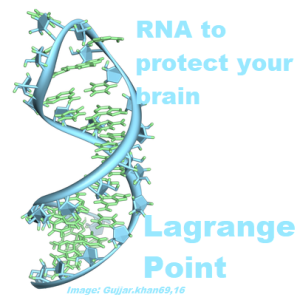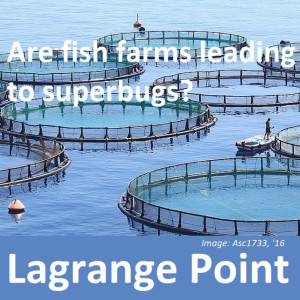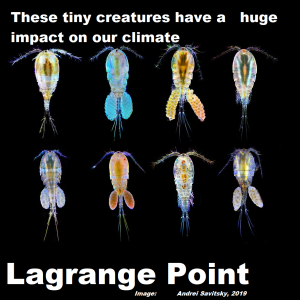Episodes

Monday Jun 28, 2021
Episode 437 - Dark Fish hiding in the ocean depths
Monday Jun 28, 2021
Monday Jun 28, 2021
Squeezing and grinding to create next generation materials from humble beginnings. Changing magnetic field by changing shape could open the door for more efficient computers. Magnetostriction causes that 'hum' you hear from electronics but it can be harnessed for good. Large electrical devices like transformers or fluorescent tubes shape influences their magnetic field. The next generation of computers may harness the way magnetic fields and physical shape can be linked. Forget rare earth metals, there is a more efficient way to make high powered computer chips out of humble iron and gallium. Luminescent polymers can be found in fancy OLED screens but are complex to produce. How can you make fancy luminescent polymers from generic polymers? By grinding them. A unique way of grinding and rolling basic generic polymers could create powerful luminescent polymers for use in high end screens, lasers and bioimaging.
- P. B. Meisenheimer, R. A. Steinhardt, S. H. Sung, L. D. Williams, S. Zhuang, M. E. Nowakowski, S. Novakov, M. M. Torunbalci, B. Prasad, C. J. Zollner, Z. Wang, N. M. Dawley, J. Schubert, A. H. Hunter, S. Manipatruni, D. E. Nikonov, I. A. Young, L. Q. Chen, J. Bokor, S. A. Bhave, R. Ramesh, J.-M. Hu, E. Kioupakis, R. Hovden, D. G. Schlom, J. T. Heron. Engineering new limits to magnetostriction through metastability in iron-gallium alloys. Nature Communications, 2021; 12 (1) DOI: 10.1038/s41467-021-22793-x
- Koji Kubota, Naoki Toyoshima, Daiyo Miura, Julong Jiang, Satoshi Maeda, Mingoo Jin, Hajime Ito. Introduction of a Luminophore into Generic Polymers via Mechanoradical Coupling with a Prefluorescent Reagent. Angewandte Chemie International Edition, 2021; DOI: 10.1002/anie.202105381

Monday Jun 21, 2021
Monday Jun 21, 2021
Squeezing and grinding to create next generation materials from humble beginnings. Changing magnetic field by changing shape could open the door for more efficient computers. Magnetostriction causes that 'hum' you hear from electronics but it can be harnessed for good. Large electrical devices like transformers or fluorescent tubes shape influences their magnetic field. The next generation of computers may harness the way magnetic fields and physical shape can be linked. Forget rare earth metals, there is a more efficient way to make high powered computer chips out of humble iron and gallium. Luminescent polymers can be found in fancy OLED screens but are complex to produce. How can you make fancy luminescent polymers from generic polymers? By grinding them. A unique way of grinding and rolling basic generic polymers could create powerful luminescent polymers for use in high end screens, lasers and bio-imaging.
- P. B. Meisenheimer, R. A. Steinhardt, S. H. Sung, L. D. Williams, S. Zhuang, M. E. Nowakowski, S. Novakov, M. M. Torunbalci, B. Prasad, C. J. Zollner, Z. Wang, N. M. Dawley, J. Schubert, A. H. Hunter, S. Manipatruni, D. E. Nikonov, I. A. Young, L. Q. Chen, J. Bokor, S. A. Bhave, R. Ramesh, J.-M. Hu, E. Kioupakis, R. Hovden, D. G. Schlom, J. T. Heron. Engineering new limits to magnetostriction through metastability in iron-gallium alloys. Nature Communications, 2021; 12 (1) DOI: 10.1038/s41467-021-22793-x
- Koji Kubota, Naoki Toyoshima, Daiyo Miura, Julong Jiang, Satoshi Maeda, Mingoo Jin, Hajime Ito. Introduction of a Luminophore into Generic Polymers via Mechanoradical Coupling with a Prefluorescent Reagent. Angewandte Chemie International Edition, 2021; DOI: 10.1002/anie.202105381

Monday Jun 14, 2021
Episode 435 - Cold war secrets and reanimating frozen life
Monday Jun 14, 2021
Monday Jun 14, 2021
Cold war secrets buried deep in the ice and forgotten, plus reanimating frozen life from Siberia. How could some frozen dirt, forgotten in a freezer for decades help us understand a future of rising sea levels? Greenland's name was a marketing stunt by Erik the Red, but it was once truly covered in greenery. Although Greenland is so close to the North Pole, all it's thick sheets of ice have completely melted (geologically) recently. How did scientists reanimate ancient animals buried in the Siberian Tundra? Rotifers can live in some unusual places, but they can also survive being frozen and brought back to life. Ancient animals have been 'unfrozen' and brought back to life though they are very small.
- Lyubov Shmakova, Stas Malavin, Nataliia Iakovenko, Tatiana Vishnivetskaya, Daniel Shain, Michael Plewka, Elizaveta Rivkina. A living bdelloid rotifer from 24,000-year-old Arctic permafrost. Current Biology, 2021; 31 (11): R712 DOI: 10.1016/j.cub.2021.04.077
- Baqai, A., Guruswamy, V., Liu, J., & Rizki, G. (2000). Introduction to the Rotifera. Retrieved 10 June 2021, from https://ucmp.berkeley.edu/phyla/rotifera/rotifera.html
- Andrew J. Christ, Paul R. Bierman, Joerg M. Schaefer, Dorthe Dahl-Jensen, Jørgen P. Steffensen, Lee B. Corbett, Dorothy M. Peteet, Elizabeth K. Thomas, Eric J. Steig, Tammy M. Rittenour, Jean-Louis Tison, Pierre-Henri Blard, Nicolas Perdrial, David P. Dethier, Andrea Lini, Alan J. Hidy, Marc W. Caffee, John Southon. A multimillion-year-old record of Greenland vegetation and glacial history preserved in sediment beneath 1.4 km of ice at Camp Century. Proceedings of the National Academy of Sciences, 2021; 118 (13): e2021442118 DOI: 10.1073/pnas.2021442118

Monday Jun 07, 2021
Episode 434 - Parasites and Symbiotic relationships
Monday Jun 07, 2021
Monday Jun 07, 2021
Insects and plants are locked into an arms race until something breaks the stalemate. How can a tag team attack of bacteria and insect larvae help crush through a leaf's defenses? WOrkign together as a team, larvae and bacteria can make a tasty meal out of a leaf. Plants can fight back against insets, so insects need to call out for help. A parasitic infection is bad for the host, but some ants gain an odd boost. How are tapeworms boosting the life expectancy of ants? When an ant gets infected with parasites, it's colony mates care for it boosting it's lifespan.
- Yukiyo Yamasaki, Hiroka Sumioka, Mayu Takiguchi, Takuya Uemura, Yuka Kihara, Tomonori Shinya, Ivan Galis, Gen‐ichiro Arimura. Phytohormone‐dependent plant defense signaling orchestrated by oral bacteria of the herbivore Spodoptera litura. New Phytologist, 2021; DOI: 10.1111/nph.17444
- Sara Beros, Anna Lenhart, Inon Scharf, Matteo Antoine Negroni, Florian Menzel, Susanne Foitzik. Extreme lifespan extension in tapeworm-infected ant workers. Royal Society Open Science, 2021; 8 (5): 202118 DOI: 10.1098/rsos.202118

Monday May 31, 2021
Episode 433 - Prioritizing memories and filtering noise
Monday May 31, 2021
Monday May 31, 2021
How does your brain decide what's important to remember? You're constantly bombarded with info so how does your brain filter it all? Do memories change over time? Do certain details stand out more in our memories over time? What details can get lost in our memories over time? How does you brain know if it's worth 'saving' that picture you've seen. How does your brain filter out and only store the important stuff.
- Julia Lifanov, Juan Linde-Domingo, Maria Wimber. Feature-specific reaction times reveal a semanticisation of memories over time and with repeated remembering. Nature Communications, 2021; 12 (1) DOI: 10.1038/s41467-021-23288-5
- Vahid Mehrpour, Travis Meyer, Eero P. Simoncelli, Nicole C. Rust. Pinpointing the neural signatures of single-exposure visual recognition memory. Proceedings of the National Academy of Sciences, 2021; 118 (18): e2021660118 DOI: 10.1073/pnas.2021660118

Monday May 24, 2021
Episode 432 - Using sound and magnetism to navigate the world
Monday May 24, 2021
Monday May 24, 2021
How do animals use different senses to navigate the world? Can sharks detect magnetic fields? How do sharks travel 20,000km so precisely? Can sharks use the Earth's magnetic field to navigate? What creatures use magnetism and how do they do it? Bats use echolocation, but what if the speed of sound changes? What if everything moved at 1.25 x speed? How can bats adapt to changes in the speed of sound?
- Bryan A. Keller, Nathan F. Putman, R. Dean Grubbs, David S. Portnoy, Timothy P. Murphy. Map-like use of Earth’s magnetic field in sharks. Current Biology, 2021; DOI: 10.1016/j.cub.2021.03.103
- Eran Amichai, Yossi Yovel. Echolocating bats rely on an innate speed-of-sound reference. Proceedings of the National Academy of Sciences, 2021; 118 (19): e2024352118 DOI: 10.1073/pnas.2024352118

Monday May 17, 2021
Episode 431 - Super stellar collisions and super computers
Monday May 17, 2021
Monday May 17, 2021
Space is really big, but when a collision happens it's incredibly complicated. Studying and predicting collisions between stars is hard even for super computers. How can you speed up the modelling of stellar collisions? A neutron star and a black hole colliding may not be as rare as you think. The collision of two heavyweights could give us the data we need to crack a century old question. The merger of a black hole and a neutron star gives off tremendous amounts of energy and may be more common than we thought. By 2030 we should have enough data captured on LIGO and other instruments to solve Hubble's dilema.
- Dominic C Marcello, Sagiv Shiber, Orsola De Marco, Juhan Frank, Geoffrey C Clayton, Patrick M Motl, Patrick Diehl, Hartmut Kaiser. Octo-Tiger: a new, 3D hydrodynamic code for stellar mergers that uses HPX parallelisation. Monthly Notices of the Royal Astronomical Society, 2021; DOI: 10.1093/mnras/stab937
- Stephen M. Feeney, Hiranya V. Peiris, Samaya M. Nissanke, and Daniel J. Mortlock. Prospects for measuring the Hubble constant with neutron-star–black-hole mergers. Phys. Rev. Lett. (accepted), 2021 [abstract]

Monday May 10, 2021
Episode 430 - Using Corn to clean water, and new wind turbine designs
Monday May 10, 2021
Monday May 10, 2021
Clever engineering can turn waste products into planet cleaning tools. Corn is America's biggest crop, but it's incredibly wasteful. Corn waste can be given a second life as activated carbon to help clean water. Corn waste makes for an efficient water when it's turned into activated charcoal. Wind turbines have to be carefully placed and located to maximise their efficiency. When designing a wind farm, the location and style of the turbine can greatly impact generation. Which design is better for wind turbines; vertical or horizontal? Vertical wind turbines aren't as common, but they can work together to boost efficiency.
- Mark Gale, Tu Nguyen, Marissa Moreno, Kandis Leslie Gilliard-AbdulAziz. Physiochemical Properties of Biochar and Activated Carbon from Biomass Residue: Influence of Process Conditions to Adsorbent Properties. ACS Omega, 2021; 6 (15): 10224 DOI: 10.1021/acsomega.1c00530
- Joachim Toftegaard Hansen, Mahak Mahak, Iakovos Tzanakis. Numerical modelling and optimization of vertical axis wind turbine pairs: A scale up approach. Renewable Energy, 2021; 171: 1371 DOI: 10.1016/j.renene.2021.03.001

Monday May 03, 2021
Episode 429 - Volcanic ash in our oceans and rafting in the air
Monday May 03, 2021
Monday May 03, 2021
Volcanic eruptions are incredibly powerful but not well understood. When a volcano erupts it can spread ash far and wide both in the ocean and in the air. What happens when a volcano erupts underwater? How much energy does an underwater volcano unleash? Where does all the energy in an underwater volcanic eruption go? Is it possible for volcanic ash to form and spread underwater? Just like jetstream currents in the air, volcanic ash can be carried far and wide in underwater eruptions. Volcanic ash can get held up by smaller particles, to raft long distances.
- T. Dürig, J. D. L. White, A. P. Murch, B. Zimanowski, R. Büttner, D. Mele, P. Dellino, R. J. Carey, L. S. Schmidt & N. Spitznagel. Deep-sea eruptions boosted by induced fuel-coolant explosions. Nature Geoscience, June 2020 DOI: 10.1038/s41561-020-0603-4
- Samuel S. Pegler, David J. Ferguson. Rapid heat discharge during deep-sea eruptions generates megaplumes and disperses tephra. Nature Communications, 2021; 12 (1) DOI: 10.1038/s41467-021-22439-y
- Eduardo Rossi, Gholamhossein Bagheri, Frances Beckett, Costanza Bonadonna. The fate of volcanic ash: premature or delayed sedimentation? Nature Communications, 2021; 12 (1) DOI: 10.1038/s41467-021-21568-8

Monday Apr 26, 2021
Episode 428 - Lightning and Early life on earth
Monday Apr 26, 2021
Monday Apr 26, 2021
What kicked off early life on earth? Organic chemistry and early life need the right minerals to be present and accessible. What helped unlock early minerals on earth like phosphorous to kick start life? Lightning strikes seem rare, but they're much more frequent than meteorites. Early life on Earth could have been helped along through lightning strikes and meteorites. DNA, RNA and Proteins are locked in a complex dance, but which came first. DNA can't replicate without the help of protein and RNA, so how did we develop DNA in the first place? Is it possible for RNA to replicate on it's own?
References:
- Benjamin L. Hess, Sandra Piazolo, Jason Harvey. Lightning strikes as a major facilitator of prebiotic phosphorus reduction on early Earth. Nature Communications, 2021; 12 (1) DOI: 10.1038/s41467-021-21849-2
- Alexandra Kühnlein, Simon A Lanzmich, Dieter Braun. tRNA sequences can assemble into a replicator. eLife, 2021; 10 DOI: 10.7554/eLife.63431

Monday Apr 19, 2021
Episode 427 - RNA protecting your brain
Monday Apr 19, 2021
Monday Apr 19, 2021
How does RNA work to protect your brain and keep it safe after a traumatic event? Micro RNA can play an important role in healthy brain development. Without key micro RNA, the development of the brain can run out of control. Without key microRNA, your can develop neurodevelopmental disorders. Without oxygen your neurons starve, so how can you protect them? How can you use mRNA to make neurons more resilient and recover after a lack of oxygen? Getting proteins across the blood brain barrier is tricky, so can they be snuck in via mRNA? Using mRNA, you can produce proteins to add brain recovery right where they're needed most.
Reference:
- Vijay Swahari, Ayumi Nakamura, Emilie Hollville, Hume Stroud, Jeremy M. Simon, Travis S. Ptacek, Matthew V. Beck, Cornelius Flowers, Jiami Guo, Charlotte Plestant, Jie Liang, C. Lisa Kurtz, Matt Kanke, Scott M. Hammond, You-Wen He, E.S. Anton, Praveen Sethupathy, Sheryl S. Moy, Michael E. Greenberg, Mohanish Deshmukh. MicroRNA-29 is an essential regulator of brain maturation through regulation of CH methylation. Cell Reports, 2021; 35 (1): 108946 DOI: 10.1016/j.celrep.2021.108946
- Merlin Crossley,Dean of Science and Professor of Molecular Biology. (2021, April 09). Explainer: What is rna? Retrieved April 13, 2021, from https://theconversation.com/explainer-what-is-rna-15169
- Yuta Fukushima, Satoshi Uchida, Hideaki Imai, Hirofumi Nakatomi, Kazunori Kataoka, Nobuhito Saito, Keiji Itaka. Treatment of ischemic neuronal death by introducing brain-derived neurotrophic factor mRNA using polyplex nanomicelle. Biomaterials, 2021; 270: 120681 DOI: 10.1016/j.biomaterials.2021.120681

Monday Apr 12, 2021
Episode 426 - Tackling waste water and antibiotic resistance together
Monday Apr 12, 2021
Monday Apr 12, 2021
Hydrogen fuel promises a cleaner future, but the methods to make it are often dirty. A new approach recycles and treats waste water with sunlight to efficiently produce hydrogen. A new electrolysis approach turns waste antibiotics into hydrogen fuel cells. Removing antibiotics and other pharmaceuticals from waster water can be tricky, but a new technique turns that into green energy. Aquaculture is growing rapidly, but it is leading to antimicrobial resistance? What contributes more to antimicrobial resistance - fish farms or waste water? Incorrectly managed waster water can lead to superbugs.
References:
- Yaoyao Wu, Yuqiong Li, Hejing Hu, Guoshen Zeng, Chuanhao Li. Recovering Hydrogen Energy from Photocatalytic Treatment of Pharmaceutical-Contaminated Water Using Co3O4 Modified {001}/{101}-TiO2 Nanosheets. ACS ES&T Engineering, 2021; 1 (3): 603 DOI: 10.1021/acsestengg.1c00003
- Thunchanok Thongsamer, Rattikan Neamchan, Adrian Blackburn, Kishor Acharya, Sawannee Sutheeworapong, Bundit Tirachulee, Pavinee Pattanachan, Soydoa Vinitnantharat, Xin-Yuan Zhou, Jian-Qiang Su, Yong-Guan Zhu, David Graham, David Werner. Environmental antimicrobial resistance is associated with faecal pollution in Central Thailand’s coastal aquaculture region. Journal of Hazardous Materials, 2021; 125718 DOI: 10.1016/j.jhazmat.2021.125718

Monday Apr 05, 2021
Episode 425 - Tiny creatures with a huge impact on our oceans
Monday Apr 05, 2021
Monday Apr 05, 2021
Can you find fresh water in the middle of the ocean? What happens when a geyser of fresh water erupts from the sea floor into the ocean? A sudden freshwater spring can radically change the ocean floor. How do plankton shells and coral help us monitor a changing climate? Life in the oceans can help sequester carbon. We can track the way the climate has changed in the past by studying strontium isotopes in seawater. Changing climates can impact life in shallow and deep water, which can lead to changes in the carbon cycle. Tiny creatures like copepods can have a huge impact on our ocean food web. How do tiny creatures like copepods gather in ephemeral ocean zephyrs. Tiny vortexs can act as a gathering place for tiny but important sea creatures.
- Eric Attias, Steven Constable, Dallas Sherman, Khaira Ismail, Christopher Shuler, Henrietta Dulai. Marine Electromagnetic Imaging and Volumetric Estimation of Freshwater Plumes Offshore Hawai'i. Geophysical Research Letters, 2021; 48 (7) DOI: 10.1029/2020GL091249
- Adina Paytan, Elizabeth M. Griffith, Anton Eisenhauer, Mathis P. Hain, Klaus Wallmann, Andrew Ridgwell. A 35-million-year record of seawater stable Sr isotopes reveals a fluctuating global carbon cycle. Science, 2021; 371 (6536): 1346 DOI: 10.1126/science.aaz9266
- Dorsa Elmi, Donald R. Webster, David M. Fields. Response of the copepod Acartia tonsa to the hydrodynamic cues of small-scale, dissipative eddies in turbulence. The Journal of Experimental Biology, 2021; 224 (3): jeb237297 DOI: 10.1242/jeb.237297

Monday Mar 29, 2021
Episode 424 - Hunting for atmospheres on other planets
Monday Mar 29, 2021
Monday Mar 29, 2021
Mars was once covered with water, so where did all the water on Mars go? What happened to the water in the Martian atmosphere? Why isn't there an abundance of heavy water in the Martian atmosphere? Water can get trapped inside rocks and minerals without volcanoes to cycle them. Volcanoes and tectonics help sequester, cycle and release water, so what happens on a planet without them? How can we hunt for signs of water atmospheres on exoplanets? On hot rocky exoplanets with oceans of magma, what happens to their hydrogen rich atmospheres? An atmosphere of of hydrogen can slowly turn and change into water with the help of a magma ocean.
References:
- E. L. Scheller, B. L. Ehlmann, Renyu Hu, D. J. Adams, Y. L. Yung. Long-term drying of Mars by sequestration of ocean-scale volumes of water in the crust. Science, 2021; eabc7717 DOI: 10.1126/science.abc7717
- Edwin S. Kite, Laura Schaefer. Water on Hot Rocky Exoplanets. The Astrophysical Journal Letters, 2021; 909 (2): L22 DOI: 10.3847/2041-8213/abe7dc

Monday Mar 22, 2021
Episode 423 - Humans vs Bacteria on earth and in space
Monday Mar 22, 2021
Monday Mar 22, 2021
Space is hard, things are different there which means something simple as salmonella becomes much more challenging. The rules of bacterial infection and response change once you're in space. How does your body respond to bacterial infection in microgravity environments? Getting sick in space may be worse than on earth. The human microbiome is incredible diverse and not well understood. Your gut contains 100,000s of bacteria groups, virus and other things. A large global study of gut microbiome has revealed thousands of new virus and bacteria types.
- Jennifer Barrila, Shameema F. Sarker, Nicole Hansmeier, Shanshan Yang, Kristina Buss, Natalia Briones, Jin Park, Richard R. Davis, Rebecca J. Forsyth, C. Mark Ott, Kevin Sato, Cristine Kosnik, Anthony Yang, Cheryl Shimoda, Nicole Rayl, Diana Ly, Aaron Landenberger, Stephanie D. Wilson, Naoko Yamazaki, Jason Steel, Camila Montano, Rolf U. Halden, Tom Cannon, Sarah L. Castro-Wallace, Cheryl A. Nickerson. Evaluating the effect of spaceflight on the host–pathogen interaction between human intestinal epithelial cells and Salmonella Typhimurium. npj Microgravity, 2021; 7 (1) DOI: 10.1038/s41526-021-00136-w
- Luis F. Camarillo-Guerrero, Alexandre Almeida, Guillermo Rangel-Pineros, Robert D. Finn, Trevor D. Lawley. Massive expansion of human gut bacteriophage diversity. Cell, 2021; 184 (4): 1098 DOI: 10.1016/j.cell.2021.01.029

Monday Mar 15, 2021
Episode 422 - Squid blending into starlight with Bio-luminescent bacteria
Monday Mar 15, 2021
Monday Mar 15, 2021
Squid can change colours, reflect light and blend in with their surroundings. How does the changing colours on squid skin work? What proteins and structures enable squid skin to reflect and amplify varying light? Squid can blend themselves into the starlight with the aid of bio-luminescence. The symbiotic relationship between bacteria and squid starts right after birth, and helps them shine to avoid predators and catch prey. A baby squid may not start out bioluminescent but a rapid spread of the right bacteria turns on the lights.
- Katherine E. Zink, Denise A. Ludvik, Phillip R. Lazzara, Terry W. Moore, Mark J. Mandel, Laura M. Sanchez. A Small Molecule Coordinates Symbiotic Behaviors in a Host Organ. mBio, 2021; 12 (2) DOI: 10.1128/mBio.03637-20
- Daniel E. Morse, Esther Taxon. Reflectin needs its intensity amplifier: Realizing the potential of tunable structural biophotonics. Applied Physics Letters, 2020; 117 (22): 220501 DOI: 10.1063/5.0026546

Monday Mar 08, 2021
Episode 421 - March Mammal Madness '21 and Bats tuning out the world
Monday Mar 08, 2021
Monday Mar 08, 2021
We find out about the outreach and impact of March Mammal Madness. What happens when 65 animals face off for bragging rights? Find out in #2021MMM . By sharing science with a dramatic flair, #2021MMM has brought attention to 1000s of scientific papers. From 1% of US High school classrooms, to a global audience of young and old, #2021MMM shows how science does not have to be boring. How do bats tune out the background noise and hunt tiny prey? Using acoustic tunnel vision, bats are able to hone in on their tiny prey. By echoing quietly, bats can detect the smallest of bugs.
- Hinde, K., Amorim, C. E., Brokaw, A. F., Burt, N., Casillas, M. C., Chen, A., . . . Anderson, C. N. (2021). March mammal madness and the power of narrative in science outreach. ELife, 10. doi:10.7554/elife.65066
- Hinde, K. (et al..). March mammal madness: How to play. Retrieved March 06, 2021, from https://libguides.asu.edu/MarchMammalMadness#s-lg-box-23314477
- Hinde, K, March mammal Madness 2021. Retrieved March 06, 2021, from http://mammalssuck.blogspot.com/2021/02/march-mammal-madness-2021.html
- Laura Stidsholt, Stefan Greif, Holger R. Goerlitz, Kristian Beedholm, Jamie Macaulay, Mark Johnson, Peter Teglberg Madsen. Hunting bats adjust their echolocation to receive weak prey echoes for clutter reduction. Science Advances, 2021; 7 (10): eabf1367 DOI: 10.1126/sciadv.abf1367

Monday Mar 01, 2021
Monday Mar 01, 2021
Slime with memories, and 3d printed materials to repair damaged neurons. How can a slime form memories? Where does it store them? What is the largest single cell organism and how does it remember things? How can you store memories in an interconnected series of tubes? How can you use 3D printed self assembling materials to help regrow damaged neurons?
- Mirna Kramar, Karen Alim. Encoding memory in tube diameter hierarchy of living flow network. Proceedings of the National Academy of Sciences, 2021; 118 (10): e2007815118 DOI: 10.1073/pnas.2007815118
- Karen Alim, Natalie Andrew, Anne Pringle, Michael P. Brenner, Mechanism of signal propagation in P. polycephalum, Proceedings of the National Academy of Sciences May 2017, 114 (20) 5136-5141; DOI: 10.1073/pnas.1618114114
- Alexandra N. Edelbrock, Tristan D. Clemons, Stacey M. Chin, Joshua J. W. Roan, Eric P. Bruckner, Zaida Álvarez, Jack F. Edelbrock, Kristen S. Wek, Samuel I. Stupp. Superstructured Biomaterials Formed by Exchange Dynamics and Host–Guest Interactions in Supramolecular Polymers. Advanced Science, 2021; 2004042 DOI: 10.1002/advs.202004042

Monday Feb 22, 2021
Episode 419 - Testing life on Mars here on Earth
Monday Feb 22, 2021
Monday Feb 22, 2021
Perseverance has landed and begun it's long mission, but how can scientists on Earth help research on Mars? Can we study life on Mars here on Earth? Robotic missions aren't the only way Martian rock has made it's way to Earth. Rare meteorites from Mars can be used to test how life would grow in Martian soil. Just how old is the Jezero crater? Can you date a crater without doing detailed tests? How does measuring lunar craters help us put a date on the age of Martian craters like Jezero?
- T. Milojevic, M. Albu, D. Kölbl, G. Kothleitner, R. Bruner, M. Morgan. Chemolithotrophy on the Noachian Martian breccia NWA 7034 via experimental microbial biotransformation. Communications Earth & Environment, 2021 DOI: 10.1038/s43247-021-00105-x
- Cassata, W. S., Cohen, B. E., Mark, D. F., Trappitsch, R., Crow, C. A., Wimpenny, J., . . . Smith, C. L. (2018). Chronology of martian breccia nwa 7034 and the formation of the martian crustal dichotomy. Science Advances, 4(5). doi:10.1126/sciadv.aap8306
- Simone Marchi. A new martian crater chronology: Implications for Jezero crater. The Astronomical Journal, 2021 [abstract]

Monday Feb 15, 2021
Episode 418 - Venus Fly Taps, Magnets and Sugar in plants
Monday Feb 15, 2021
Monday Feb 15, 2021
Can plants produce magnetic fields? By studying Venus Fly Traps, scientists can figure out if plants can make their own magnetic fields. Do pulse of plants produce magnetic fields like those we see in animal muscles? Can you give a plant an MRI? The iconic Venus Fly trap can help us understand how to study the health of plants without harming them. Is there a way to measure the metabolism of a plant directly? By studying the sugar inside plant cells, scientists can understand their growth and response to stress.
- Anne Fabricant, Geoffrey Z. Iwata, Sönke Scherzer, Lykourgos Bougas, Katharina Rolfs, Anna Jodko-Władzińska, Jens Voigt, Rainer Hedrich, Dmitry Budker. Action potentials induce biomagnetic fields in carnivorous Venus flytrap plants. Scientific Reports, 2021; 11 (1) DOI: 10.1038/s41598-021-81114-w
- Chiara Diacci, Tayebeh Abedi, Jee Woong Lee, Erik O. Gabrielsson, Magnus Berggren, Daniel T. Simon, Totte Niittylä, Eleni Stavrinidou. Diurnal in vivo xylem sap glucose and sucrose monitoring using implantable organic electrochemical transistor sensors. iScience, 2021; 24 (1): 101966 DOI: 10.1016/j.isci.2020.101966

